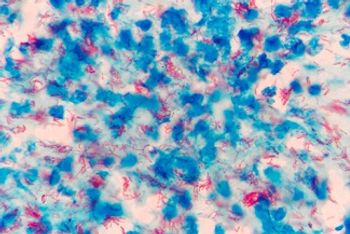
A recent letter published in the CDC’s Emerging Infectious Diseases discussed a case that proved that novel hybrid livestock schistosomes can infect humans.

A recent letter published in the CDC’s Emerging Infectious Diseases discussed a case that proved that novel hybrid livestock schistosomes can infect humans.

A team of 75 researchers from 56 institutions have conducted a global study of tuberculosis strains, finding that some may have adapted to specific human populations.

Researchers from the University of California-San Francisco tested the ability of 2,177 FDA-approved compounds to reduce viral proliferation in Zika-susceptible cells.

Researchers have found evidence that pre-cut bagged salads may encourage Salmonella colonization.

Glaucoma, a serious eye disease that can potentially cause permanent vision loss, was diagnosed in an infant with Zika.

In honor of World AIDS day, the National Institutes of Health reflected on advancements made in the fight against HIV and address future goals designed to end the HIV/AIDS pandemic.

The National Institute of Mental Health has granted researchers at the University of Pennsylvania School of Nursing and New York Blood Center $769,578 to go towards efforts to create an HIV awareness program for women.

HIV used to be a death sentence, but highly active antriretroviral therapy means infected individuals are living long enough to die from other diseases.

A new study’s findings make researchers optimistic as it proves that prolonged storage and pasteurization effectively inactivated Zika in the breast milk taken from women infected with the virus.

Congenital cytomegalovirus can cause a number of health issues in newborn babies, and a team of researchers in Japan have developed a prenatal screening method to detect these infections early.

Public Health England and the Department for Environment, Food and Rural Affairs researchers in the United Kingdom found drug-resistant E. coli in a large number of chicken samples, while much lower rates of contamination were observed in beef and pork samples.

A new study explores the role that climate change has in the emergence of vector-borne diseases such as Dengue fever, Chikungunya, and Zika virus.

Thomas Frieden, MD, MPH, director of the CDC, and Susan Desmond-Hellmann, MD, chief executive of the Bill and Melinda Gates Foundation discuss how governments and business organizations should prepare for pandemics, especially a potential influenza pandemic.

An outbreak of Legionnaires’ disease in Saratoga Springs, New York leaves several ill and two dead.

This afternoon, the CDC held a telebriefing on how the use of syringe services programs by injection drug users has increased, but access to these programs needs to improve in order to improve HIV prevention efforts.

A recent study lead by researchers from the University of Freiburg analyzed the occurrence of carbapenemase-producing Klebsiella pneumoniae and Escherichia coli in European hospitals.

The first HIV vaccine efficacy study in seven years is currently being conducted in South Africa, with researchers testing if a new vaccine regimen called HVTN 702 can provide adequate protection against HIV.

Researchers in the United Kingdom have found that predatory bacteria can be used to safely treat antibiotic-resistant Shigella infections, which affect more than 1 million people worldwide each year.

Recent outbreaks of highly pathogenic H5N8 avian influenza in Northern Europe, Russia, and the Middle East are worrying neighboring countries and have led to the culling of tens of thousands of chicken, turkeys, and ducks.

A Texas resident with no history of travel has been diagnosed with the Zika virus. Officials believe this may be the first case of locally-transmitted Zika in the state.

A recent presentation by US Food and Drug Administration representatives explained why contaminated sprouts continue to be the cause of many food-borne illnesses.

Following best practices for the “placement, maintenance, and removal” of catheters is just as important as appropriate testing in order to reduce catheter-associated urinary tract infections (CAUTIs).

Two cases of meningococcal disease strain B have been confirmed at Oregon State University, urging officials to take preventive measures.

A recent outbreak of highly pathogenic avian influenza in commercial chickens and ducks in South Korea has health officials in the country on high alert and some poultry farmers taking quarantine measures.

IBM, Walmart, and Tsinghua University have partnered up to improve food safety practices in China.

A $29 million grant from the Bill & Melinda Gates Foundation will help focus efforts on eliminating malaria from Asia-Pacific and Southern Africa.

A recent study of employees at an industrial hog facility found that the livestock workers were more likely to carry Staphylococcus aureus bacteria in their noses, including antibiotic-resistant isolates.

A recent study assessed if laws pertaining to the screening and reporting of hepatitis B may increase identification in pregnant women and thus, allow for more infants who have been exposed to the virus to receive post-exposure prophylaxis.

On their quest to put an end to a threat that may change modern medicine as we know it, researchers discovered four chemicals that disrupt AcrA, an efflux pump protein, that contributes to antibiotic resistance in bacteria.

In mid-November, the CDC released the “Core Elements of Outpatient Antibiotic Stewardship.”